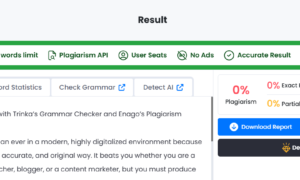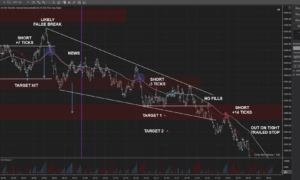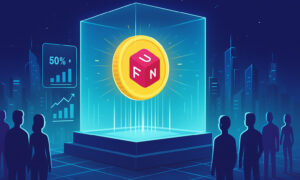The food packaging market is a crucial component of the global food industry. It encompasses the processes and materials used to enclose and protect food products from contamination, damage, and spoilage. The significance of food packaging lies in its ability to extend the shelf life of products, maintain quality, and provide consumers with critical information about the food they consume. As the global population continues to rise and consumer preferences evolve, the demand for innovative and efficient food packaging solutions has never been more critical.
Current State of the Food Packaging Market
The food packaging market has seen substantial growth over the past few decades, driven by increasing consumer demand for convenience, safety, and sustainability. According to recent market analyses, the global food packaging market was valued at approximately USD 320 billion in 2020 and is expected to reach around USD 450 billion by 2025, growing at a compound annual growth rate (CAGR) of 7%. This growth can be attributed to several factors, including advancements in packaging technology, the rise of e-commerce, and heightened awareness of environmental issues.
Emerging Trends in Food Packaging
Eco-Friendly and Sustainable Options: One of the most significant trends in the food packaging industry is the shift towards eco-friendly and sustainable packaging solutions. Consumers are increasingly concerned about the environmental impact of single-use plastics and are demanding alternatives that reduce waste and promote recycling. Biodegradable packaging materials, such as plant-based plastics, and reusable packaging options are gaining traction. Companies are investing in innovative solutions like edible packaging and compostable materials to meet these demands.
Smart Packaging: Technological advancements have led to the development of smart packaging solutions that enhance the functionality of traditional packaging. These include indicators that show the freshness of the product, QR codes that provide detailed product information, and temperature-sensitive packaging that ensures optimal storage conditions. Smart packaging not only improves the consumer experience but also helps reduce food waste by providing real-time information about the product’s condition.
Minimalist and Transparent Packaging: Another emerging trend is the move towards minimalist and transparent packaging. Consumers prefer packaging that is simple, easy to open, and clearly displays the product inside. Transparent packaging allows consumers to see the quality and freshness of the product, building trust and reducing the likelihood of food waste. Minimalist designs also use fewer materials, contributing to sustainability efforts.
Changing Consumer Preferences and Innovation in Food Packaging
Consumer preferences are rapidly evolving, and this is driving innovation in the food packaging industry. Today’s consumers are more health-conscious, environmentally aware, and technologically savvy. They demand packaging that aligns with their values and lifestyle. For instance, the rise of on-the-go lifestyles has increased the demand for convenient, single-serve packaging solutions. Additionally, the growing popularity of plant-based and organic foods has led to a demand for packaging that reflects these products’ natural and eco-friendly attributes.
Health and safety concerns, especially in the wake of the COVID-19 pandemic, have also influenced packaging trends. Consumers now prioritize hygienic and tamper-evident packaging that ensures the safety of food products. This has led to innovations in packaging materials and designs that enhance protection and reduce the risk of contamination.
Market Potential for Different Types of Food Packaging Materials
Plastic: Plastic remains the most widely used material in food packaging due to its versatility, durability, and cost-effectiveness. However, the environmental impact of plastic waste has led to a growing demand for alternatives. Innovations in biodegradable and recyclable plastics are addressing some of these concerns, making plastic a more sustainable option.
Paper and Cardboard: Paper and cardboard packaging are gaining popularity as eco-friendly alternatives to plastic. They are biodegradable, recyclable, and often sourced from renewable resources. The market for paper-based packaging is expected to grow significantly, driven by consumer demand for sustainable options and regulatory pressures to reduce plastic use.
Glass: Glass packaging is known for its high-quality preservation of food products and its recyclability. It is particularly popular in the beverage industry. Although glass is heavier and more expensive than other materials, its eco-friendly properties and ability to maintain product integrity make it a preferred choice for premium products.
Metal: Metal packaging, including aluminum and steel, is widely used for canned foods and beverages. It offers excellent protection against contamination and has a high recycling rate. Innovations in lightweight metal packaging and the development of more efficient recycling processes are enhancing its sustainability profile.
Impact of Technological Advancements on the Food Packaging Industry
Technological advancements are revolutionizing the food packaging industry, leading to more efficient, sustainable, and innovative solutions. Some key technological trends include:
Active and Intelligent Packaging: Active packaging involves the use of materials that interact with the food to extend shelf life and maintain quality. This includes oxygen absorbers, moisture regulators, and antimicrobial agents. Intelligent packaging, on the other hand, incorporates sensors and indicators that provide real-time information about the product’s condition, enhancing safety and reducing waste.
3D Printing: 3D printing technology is being used to create customized packaging designs and prototypes quickly and cost-effectively. This allows companies to experiment with new designs and materials, leading to more innovative packaging solutions.
Nanotechnology: Nanotechnology is being used to develop packaging materials with enhanced properties, such as increased strength, improved barrier protection, and antimicrobial capabilities. These advancements help extend the shelf life of food products and ensure their safety.
Automation and Robotics: Automation and robotics are streamlining packaging processes, improving efficiency, and reducing costs. Automated packaging systems can handle a wide range of tasks, from filling and sealing to labeling and palletizing, ensuring consistency and accuracy. Additionally, the integration of advanced nutrition labels through scalable and reliable solutions enhances productivity and ensures compliance with regulatory standards.
Investment Opportunities in the Food Packaging Market
The food packaging market offers numerous investment opportunities, driven by the growing demand for innovative and sustainable packaging solutions. Key areas for potential growth include:
Sustainable Packaging Solutions: Investments in biodegradable, recyclable, and compostable packaging materials are expected to yield significant returns as consumer demand for eco-friendly options continues to rise. Companies that develop innovative solutions to reduce plastic waste and promote sustainability are well-positioned for growth.
Smart Packaging Technologies: The development of active and intelligent packaging solutions presents a lucrative investment opportunity. Technologies that enhance food safety, extend shelf life, and provide real-time information about the product are in high demand.
E-commerce Packaging: With the rapid growth of e-commerce, there is a rising need for packaging solutions that ensure the safe and efficient delivery of food products. Investments in packaging materials and designs that cater to the specific requirements of e-commerce can lead to substantial growth.
Automation and Robotics: The adoption of automation and robotics in packaging processes offers significant potential for cost savings and efficiency improvements. Companies that invest in advanced packaging technologies can gain a competitive edge in the market.

Challenges Faced by Companies in the Food Packaging Sector
Despite the growth opportunities, companies in the food packaging sector face several challenges:
Rising Costs: The cost of raw materials, energy, and transportation has been increasing, impacting the profitability of packaging companies. Additionally, the development and implementation of sustainable packaging solutions often involve higher costs.
Regulatory Compliance: Stringent regulations related to food safety, environmental impact, and labeling requirements pose challenges for packaging companies. Staying compliant with these regulations requires continuous investment in research and development.
Consumer Expectations: Meeting the evolving preferences and expectations of consumers can be challenging. Companies need to balance the demand for innovative and sustainable packaging with the need to maintain affordability and functionality.
Supply Chain Disruptions: Global supply chain disruptions, such as those caused by the COVID-19 pandemic, have highlighted the vulnerability of the packaging industry. Ensuring a resilient and flexible supply chain is crucial for maintaining production and meeting demand.
Importance of Proper Labeling and Information on Food Packaging
Proper labeling and information on food packaging are essential for consumer safety and transparency. Labels provide critical information about the product, including nutritional content, ingredients, allergens, and expiration dates. This information helps consumers make informed choices about the food they consume and ensures that they are aware of any potential health risks.
In addition to regulatory requirements, proper labeling is important for building consumer trust. Transparent and accurate labeling demonstrates a commitment to quality and safety, enhancing the brand’s reputation and fostering customer loyalty. Innovations in labeling technologies, such as QR codes and digital labels, are further improving the accessibility and accuracy of product information.
Future Outlook for the Food Packaging Market
The future of the food packaging market looks promising, with continued growth and innovation expected. By 2024, several key trends and developments are likely to shape the market:
Increased Focus on Sustainability: The demand for sustainable packaging solutions will continue to drive innovation in biodegradable, recyclable, and compostable materials. Companies that prioritize sustainability will be well-positioned for growth.
Advancements in Smart Packaging: The adoption of smart packaging technologies will increase, enhancing food safety, reducing waste, and improving the consumer experience. Innovations in active and intelligent packaging will play a significant role in the future of the industry.
Growth of E-commerce: The rise of e-commerce will create new opportunities for packaging solutions that cater to the unique requirements of online food delivery. Packaging that ensures the safe and efficient transport of food products will be in high demand.
Regulatory Changes: Evolving regulations related to food safety, environmental impact, and labeling will continue to shape the packaging industry. Companies will need to stay abreast of regulatory developments and invest in compliance to remain competitive.
Consumer-Centric Innovation: The focus on consumer preferences and demands will drive innovation in packaging designs and materials. Companies that understand and cater to the needs of health-conscious, environmentally aware, and convenience-seeking consumers will thrive.
Conclusion
The food packaging market is a dynamic and rapidly evolving industry that plays a critical role in the global food supply chain. With growing consumer demand for convenience, safety, and sustainability, the market offers numerous opportunities for innovation and investment. As the industry continues to advance, companies that embrace emerging trends, invest in new technologies, and prioritize sustainability will be well-positioned for success. The future of food packaging promises to be exciting, with continued growth and development driven by technological advancements, changing consumer preferences, and a heightened focus on environmental responsibility.



































